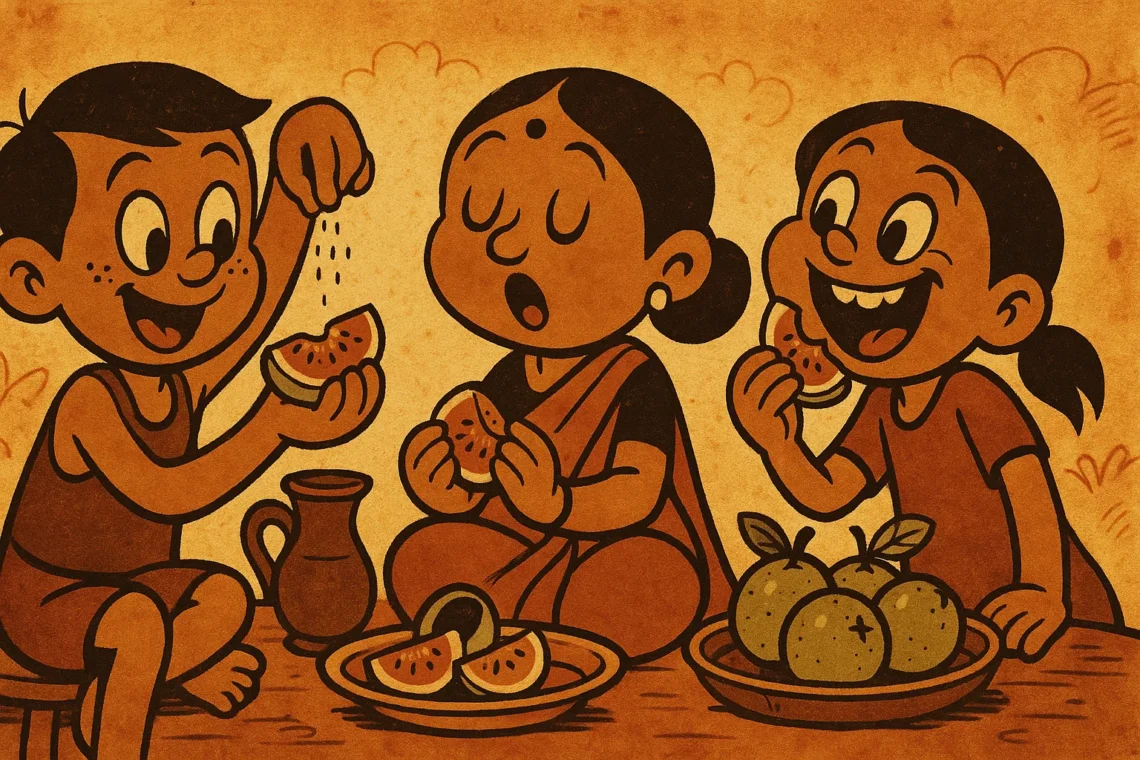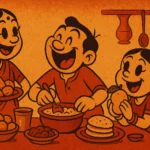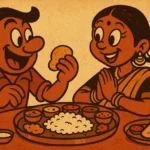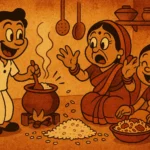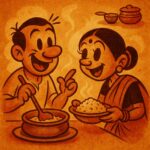Before we knew words like “snack culture” or “flavor profiles,” we had our own edible hacks. Nothing that came in fancy packaging. Nothing that cost more than five rupees. Just raw fruit, local ingenuity, and whatever we could dig out of the kitchen shelf. And at the center of it all was the humble guava—crunchy, slightly under-ripe, and always improved by a generous rub of salt.
You didn’t need a knife. You didn’t even need a plate. You just needed a guava, preferably swiped from a neighbor’s tree, a little pouch of salt stolen from the kitchen in a crumpled paper corner, and a place to sit—usually a compound wall or under a school staircase. One friend would break the guava open with their bare hands, uneven but beautiful. The other would do the honors of salting it. And then began the ritual of passing pieces around, each bite a punch of sour, salt, and crunch so sharp you could feel it in your jaw hinges.
The Science of Spontaneous Flavors
Of course, now we call it “enhancing the taste,” or “balancing sweet and savory.” Back then, we just knew it made fruit taste better. Guavas, raw mangoes, star fruit—none of them were ever eaten plain. There was always a bit of salt. Sometimes red chili powder. Sometimes black salt if you were feeling fancy. It wasn’t seasoning; it was survival. A way to turn the boring into the brilliant. A life skill passed down through instinct more than instruction.
We knew which part of the raw mango had the most sourness, how to avoid the worm-bitten parts of a jamun, how to suck the pulp off a tamarind pod like it owed us money. All without Google. All without YouTube tutorials. These weren’t snacks. They were our edible rebellion against the boring and the packaged.
Paper Packets and Pocket Dust
The salt mix wasn’t from a bottle. It came in those tiny, leaky paper triangles sold by street vendors or packed by your mom using leftover school notebook paper. We’d stuff them into our pockets like contraband. By midday, the paper would be stained and limp, the salt damp from humidity and pocket sweat, but it didn’t matter. It still worked. Still turned a boring tiffin box fruit into a playground feast.
There were rules, of course. If you brought the guava, someone else brought the salt. You didn’t double dip. And you never took the last piece unless everyone else said no twice. These were moral codes forged in school corridors and playgrounds, stricter than the class monitor’s warnings.
The Sweet Spot of Jugaad
Sometimes, when fruit wasn’t available, we improvised. Parle-G biscuits dipped in water to make “cake.” Bread slices rolled flat and filled with sugar. Boiled potatoes smashed with salt and whatever masala someone found. Raw maggi noodles crushed with the taste-maker and eaten like chips. We weren’t broke—we were brilliant. We didn’t crave junk food. We built our own.
And salt was everywhere. Salt on orange slices. Salt on boiled eggs. Salt on everything except mistakes. It was our shortcut to intensity. A flavor amplifier. A reminder that even a bland day could be rescued by a mouth-puckering punch of sodium and citrus.
Imported Nostalgia
Now in Austin, guavas cost four dollars apiece. They’re too soft, too polite. I still buy them out of guilt or longing, cut them with a proper knife, and sprinkle sea salt like an adult who shops at Whole Foods. It’s fine. But it’s not that. It’s not the slightly under-ripe, seed-crunching, jaw-tingling bite I remember. It doesn’t come with dust on your knees or paper salt in your pocket.
Still, sometimes when I get a decent one, I’ll rub a little pink salt on it and close my eyes. For a few seconds, I’m back under the neem tree outside school. I can hear the bell ringing, the scolding from a teacher we ignored, the laughter of friends passing around slices like treasure. We didn’t have money, but we had taste. We didn’t have recipes, but we had rhythm. We made snacks out of nothing. And joy out of guava.
So the next time someone asks what your favorite childhood food was, skip the parathas and biryanis. Tell them about guava. Tell them about the salt. And tell them it wasn’t just a fruit—it was proof that we knew how to turn anything into something worth sharing.
Born in Mumbai, now stir-frying feelings in Texas. Writes about food, memory, and the messy magic in between — mostly to stay hungry, sometimes just to stay sane.

